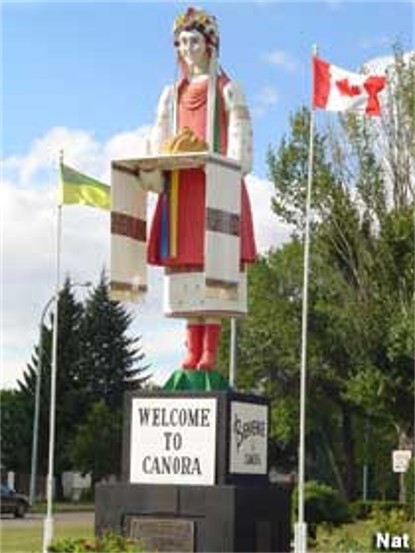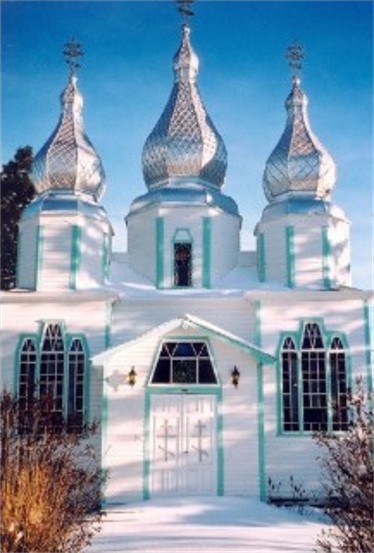Saskatchewan
Saskatchewan. A prairie province (2016 pop 1,098,352) of Canada, lying between Manitoba and Alberta, and covering an area of 652,330 sq km. Its capital is Regina. According to Canadian census figures, its Ukrainian population in 2006 was 129,265. Of these, 35,850 had a ‘single’ Ukrainian-only origin, while the remaining 93,415 claimed a ‘multiple’ (Ukrainian and other) origin. Some 16,350 stated Ukrainian as their mother tongue. The major urban Ukrainian population centers in the province include Saskatoon (38,825; 10,380 [single]/28,450 [multiple]), Regina (25,725; 5,625/20,100), Prince Albert (6,305; 1,545/4,755), Yorkton (5,955; 2,525/3,425), Moose Jaw (3,175; 645/2,530), and North Battleford (2,460; 735/1,725). Recent immigration from Ukraine to the province has been fairly modest, with approx 315 arrivals in the 1991–2006 period.
The first Ukrainian ‘colony’ (in the nomenclature of the time) in Saskatchewan was established in the Montmartre-Candiac area by 1895–6. In subsequent years large numbers of Ukrainian immigrants moved into bloc settlements, the largest of which were in the Yorkton–Canora–Preeceville region (eastern Saskatchewan), the Rosthern–Yellow Creek–Cudworth region (north of Saskatoon), and the Radisson–Hafford–Whitkow region (east of North Battleford). They were overwhelmingly agricultural settlers. The steady influx of Ukrainian immigrants peaked in 1911–14. Saskatchewan was a fairly popular destination point for new Ukrainian arrivals to Canada during the interwar period, although many of these were forced to leave for economic reasons during the Depression. Only a small number of Ukrainians (just over 2,000) arrived in the province with the post-Second World War immigration to Canada as well as with the recent so-called ‘fourth wave’ from contemporary Ukraine.
The urbanization of Saskatchewan's Ukrainians is a relatively recent phenomenon. In 1921 only 10 percent lived in cities. This figure jumped from 20.5 percent in 1951 to 63.3 percent in 1981. Ukrainian urban residents are mostly workers, small businessmen, public servants, and professionals. This urbanization took place at the same time that Saskatchewan experienced extensive rural depopulation. While many Ukrainians moved to cities within the province, many also resettled in other parts of Canada, notably Alberta, British Columbia and Ontario. Nevertheless, Ukrainians remain the largest ethnic group in many rural localities (notably in the three bloc settlement regions noted above), and in several dozen towns they constitute an absolute majority. Their influence is evident in the names of the localities, the style of the churches, the frequency with which the Ukrainian language and traditions are encountered, and the large number of municipal politicians of Ukrainian origin.
Historically, Saskatchewan has been an important center for Ukrainian organizational life in Canada. In addition to playing a pivotal role in the creation of the Ukrainian Greek Orthodox Church of Canada in 1918, Saskatoon’s Mohyla Ukrainian Institute provided a strong focus for the activities of the ‘samostiinyky’ who established the Ukrainian Self-Reliance League (USRL) in 1927 (whose leading figures included Julian Stechishin and Wasyl Swystun) as well as the Ukrainian Women's Association of Canada in 1926 (led for a decade after its founding by Savella Stechishin). Further to this, for decades rural Saskatchewan provided one of the strongest bases of support for the USRL and the UOCC. The Canadian Sitch Association was quite strong in the Yorkton region of Saskatchewan in the interwar period as a result of the organizing efforts of its first leader, Volodymyr Bosy. The Ukrainian Catholic Brotherhood of Canada (BUCC) was established in Saskatoon in 1932 by Rev. Stefan Senchuk, who also headed the group for many years and edited its Yorkton-based publication Buduchnist’ natsiï. The Ukrainian National Federation (UNF) established numerous branches in Saskatchewan after its formation in 1932, although a substantial number disbanded or were dormant by the mid-1940s as a result of out-migration. The UNF’s newspaper, Novyi shliakh, was published in Saskatoon from 1933 to 1942. The Ukrainian Labour-Farmer Temple Association established branches in such cities as Regina, Moose Jaw, and Saskatoon, but had relatively little success in organizing in the province’s rural areas. After the Second World War the Canadian League for Ukraine’s Liberation established branches in Saskatoon, Regina, Moose Jaw, Yorkton, and North Battleford. The post-war period also saw a proliferation of Ukrainian dance groups and the growth of non-sectarian Ukrainian cultural associations, particularly from the 1970s. The Saskatchewan Provincial Council of the Ukrainian Canadian Congress was established in 1971 as an umbrella body for the province’s Ukrainian community.
The Ukrainian Catholic church, with 17,615 adherents (2001), is the largest Ukrainian religious denomination in the province. Since 1956 its churches have been under the jurisdiction of the Saskatoon eparchy (which was preceded in 1951–6 by the Saskatoon exarchate). Its hierarchs have included bishops Andrew Roborecki (1956–82), Basil Filevich (1984–95), Cornelius Pasichny (1996–8), Michael Wiwchar (2001–2008), and Bryan Bayda (2008–). The Redemptorist Fathers have played an important role in the Ukrainian Catholic life of the province, providing a significant portion of the early clergy there, establishing a monastery in 1913, and operating a press in Yorkton. For many years (1917–79) the Sisters Servants of Mary Immaculate operated the Sacred Heart Academy in Yorkton (it later became Sacred Heart High School), while Saint Joseph's College, established by the Christian Brothers in 1919, provided local schooling for boys until 1973. In 1935 the BUCC set up the Sheptytsky Institute in Saskatoon. The province’s second-largest Ukrainian denomination is the Ukrainian Orthodox Church of Canada, which had 5,050 adherents in the province in 2001. Its parishes are administered by the church’s Central Diocese, which has its see in Winnipeg.
Notwithstanding the fact that the first Ukrainian-Canadian member of the legislative assembly in Saskatchewan, George Dragan, was not elected until 1934 (with Orest Zherebko becoming the second in 1938), Ukrainians have played an important role in the province's political life. In 1952 Alex Gordon Kuziak became the first Ukrainian to be appointed to a provincial cabinet. In 1956 Mary Fedchuk Batten was elected to the provincial legislature, the first woman of Ukrainian origin to win a seat in it. Stephen Worobetz served as the province's lieutenant governor in 1969–75, as did Sylvia Fedoruk in 1988–94. Roy Romanow, served as deputy premier and as minister of intergovernmental affairs under Allan Blakeney (1971–82), succeeded him as leader of the New Democratic party, and then served as premier of Saskatchewan in 1991–2001. Myron Kowalsky served as Government Whip in the province before being elected as Speaker of the Legislative Assembly in 2001 (and re-elected in 2004). John Hnatyshyn was the first Saskatchewan senator of Ukrainian origin (1959–67). He was followed by Raynell Andreychuk and Dave Tkachuk, both who have served as senators since 1993. Ramon Hnatyshyn, a Conservative MP from Saskatchewan, was a federal cabinet minister in 1979–88 and Governor-General of Canada in 1990–5.
There was some limited provision for Ukrainian-language instruction in the pioneer period, but this dissipated during the First World War. It was not until 1952 that Ukrainian was allowed as a language of study in Saskatchewan public schools. The province passed the Multiculturalism Act in 1974, and in 1978 amended the Education Act to allow for bilingual (including Ukrainian-English) education; passage of the latter has resulted in the launching of a Ukrainian-English school program in Saskatoon in 1979. The University of Saskatchewan (UofS) became the first post-secondary institution in Canada to introduce credit courses in Ukrainian language and literature when it established its Department of Slavic Studies in 1945. Its first head (to 1975) was Constantine Andrusyshen. The Prairie Centre for the Study of Ukrainian Heritage was established at the UofS in 1999. Its founding director (1999–2004) was Bohdan Kordan.
Saskatchewan’s creative talents include the poet Andrew Suknaski, the renown immigrant potter Peter Rupchan, and the primitivist painter Dmytro Stryjek. Notable Ukrainian dance troupes in the province, including the Yevshan Ukrainian Folk Ballet Ensemble and Pavlychenko Folklorique Ensemble from Saskatoon and the Poltava Ensemble of Song, Music, and Dance in Regina.
BIBLIOGRAPHY
Barry, Bill. Ukrainian People Places: The Ukrainians, Germans, Mennonites, Hutterites and Doukhobors and the names they brought to Saskatchewan (Regina 2001)
Kordan, Bohdan. ‘Ukrainian Settlements,’ in Canadian Plains Research Centre, The Encyclopedia of Saskatchewan (Regina 2005)
Saskatchewan Ukrainian Historical Society. Saskatchewan’s Ukrainian Legacy: A Travel Guide to the Cultural and Historical Sites in the Ukrainian Bloc Settlement Communities (Saskatoon 2006)
Kostyuk, Serhiy. Canada and Saskatchewan through their Eyes: 2007 Survey of Recent Immigrants from Ukraine (Saskatoon 2007)
[This article was updated in 2008.]

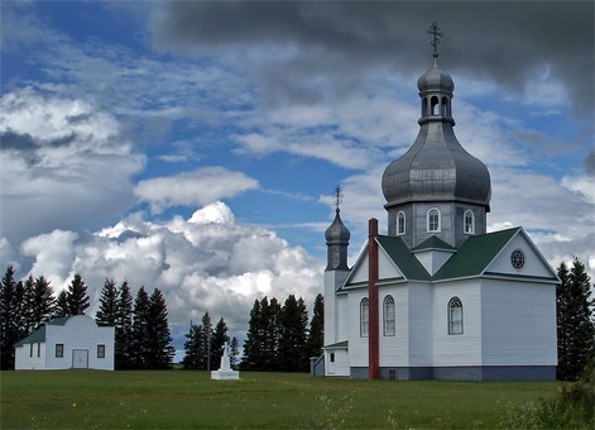
.jpg)
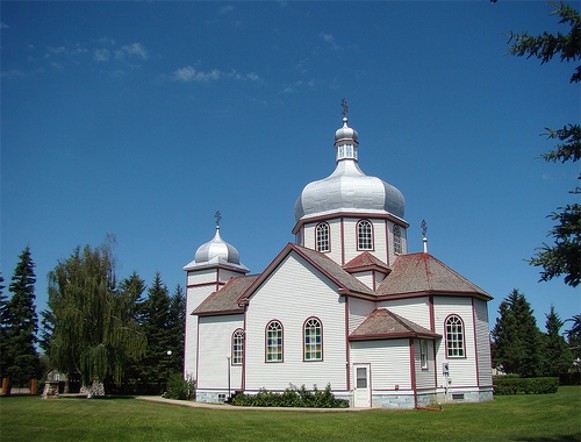
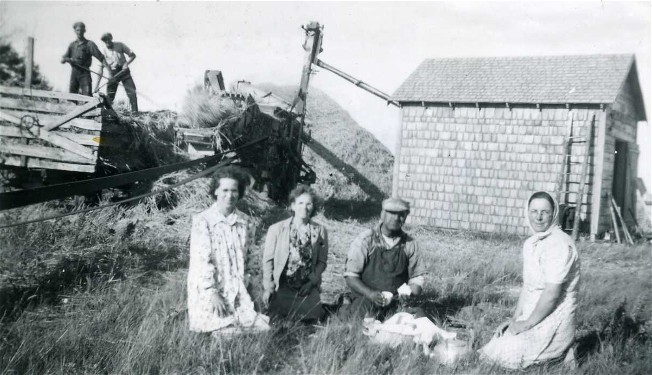
.jpg)
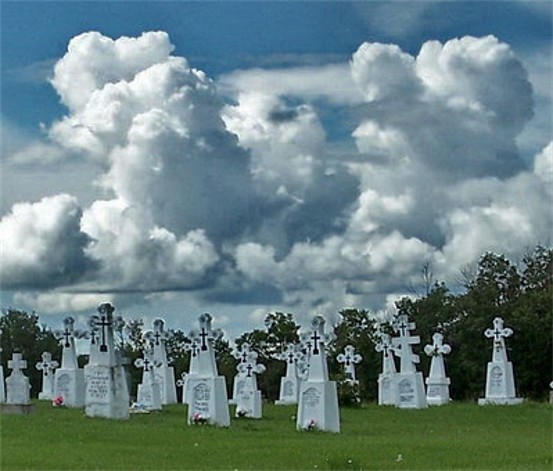
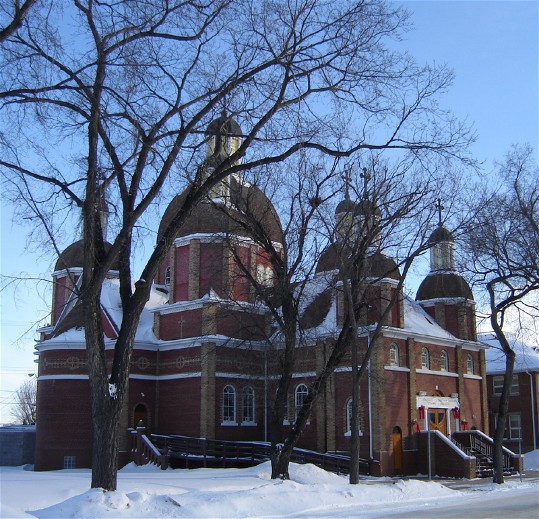
.jpg)
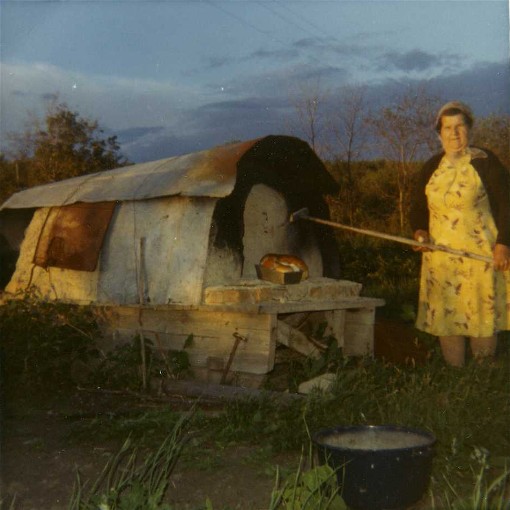
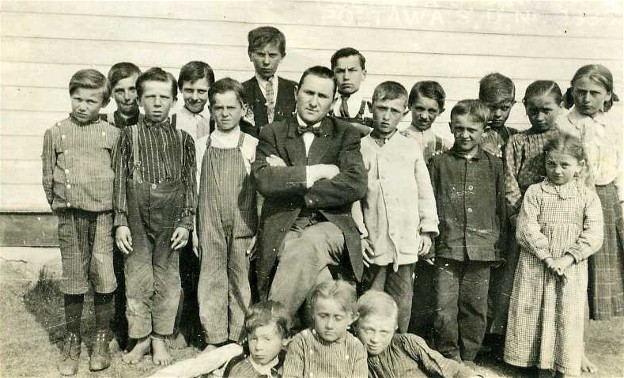
.jpg)
